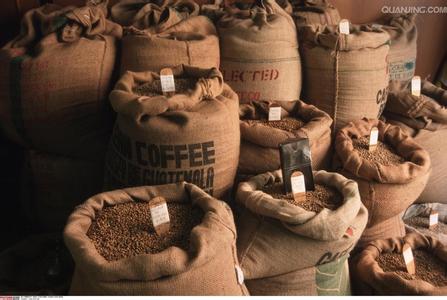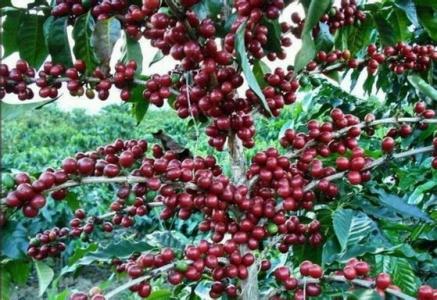A brief introduction to the special taste brand of Kenyan hand-roasted coffee
A brief introduction to the special taste brand of Kenyan hand-roasted coffee
Light roasted Kenyan coffee has a very strong taste of banana ester and citric acid, as well as malt and cereal flavors. City-wide baked (Full city) Kenyan coffee has intense aromas of caramel, cocoa and sweet chocolate bars, with berry acidity and finish. However, City roasting and city + roasting (city + City+) can really make Kenyan coffee shine. Kenyan coffee in the performance of City+ roasting, Kenyan coffee will have a typical tropical fruit, white grape flavor, but also has a bright acidity and berry flavor.
The flowery charm of Kenyan coffee is a strong floral aroma that, in some cases, blends with spices to form a lilac-like fragrance. Good roasting can successfully blend the spice with the aroma and prevent the coffee from becoming too irritant. Roasting plays an important role in the formation of this unique aroma and complex sweetness in Kenya.
One of the keys to really roasting Kenyan coffee is the dehydration stage of roasting. By drying slowly and gently over a low heat, you can bring out the sweetness of Kenyan coffee and help improve the taste. Ensuring that first crack is robust and powerful can also help improve the taste. During baking, an explosion is the most elastic moment in the cell structure of coffee beans, and full bursting can fully decompose carbohydrates and bring about changes in taste.
When baking Kenyan AB and PB from the same processing plant, I found that slow and gentle dehydration not only adds to the taste, but also brings more aroma, aroma and flavor. I have made a comparison that Kenyan coffee, which is gently and slowly dehydrated, has a brighter and richer flavor on the first day than those that were dehydrated for a short time in the fire. The sweetness was highlighted the next day, with a creamy and sticky taste.

Important Notice :
前街咖啡 FrontStreet Coffee has moved to new addredd:
FrontStreet Coffee Address: 315,Donghua East Road,GuangZhou
Tel:020 38364473
- Prev

A brief introduction to the flavor and taste of Columbia Huilan and Na Linglong coffee beans
Description of flavor and taste of Colombian Huilan and Nalinglong coffee beans Huilan area belongs to mountain terrain, and coffee is planted on the slopes of the canyon, so it has a high altitude and suitable temperature for growing high-quality Arabica beans. The climate of the canyon slope not only prevents the cold wind from blowing in, but also keeps the mountain breeze cool without high temperature, and Rain Water is also relatively abundant, which can be said to be blessed.
- Next

Description of characteristics and Flavor of washed Yega Coffee beans A brief introduction to the grinding scale of taste treatment method
A brief introduction to the grinding scale of the refined treatment of raw coffee beans dating back to the mid-18th century, the refined treatment of raw coffee beans can be traced back to the mid-18th century. In the process of refining, the pulp of the red fruit of coffee is first removed, and then the residual mucous membrane on the inner pericarp is removed by using a fermentation tank, which is then cleaned and dried in the Gedeo district, 4 kilometers west of the town of Yega.
Related
- Detailed explanation of Jadeite planting Land in Panamanian Jadeite Manor introduction to the grading system of Jadeite competitive bidding, Red bid, Green bid and Rose Summer
- Story of Coffee planting in Brenka region of Costa Rica Stonehenge Manor anaerobic heavy honey treatment of flavor mouth
- What's on the barrel of Blue Mountain Coffee beans?
- Can American coffee also pull flowers? How to use hot American style to pull out a good-looking pattern?
- Can you make a cold extract with coffee beans? What is the right proportion for cold-extracted coffee formula?
- Indonesian PWN Gold Mandrine Coffee Origin Features Flavor How to Chong? Mandolin coffee is American.
- A brief introduction to the flavor characteristics of Brazilian yellow bourbon coffee beans
- What is the effect of different water quality on the flavor of cold-extracted coffee? What kind of water is best for brewing coffee?
- Why do you think of Rose Summer whenever you mention Panamanian coffee?
- Introduction to the characteristics of authentic blue mountain coffee bean producing areas? What is the CIB Coffee Authority in Jamaica?

